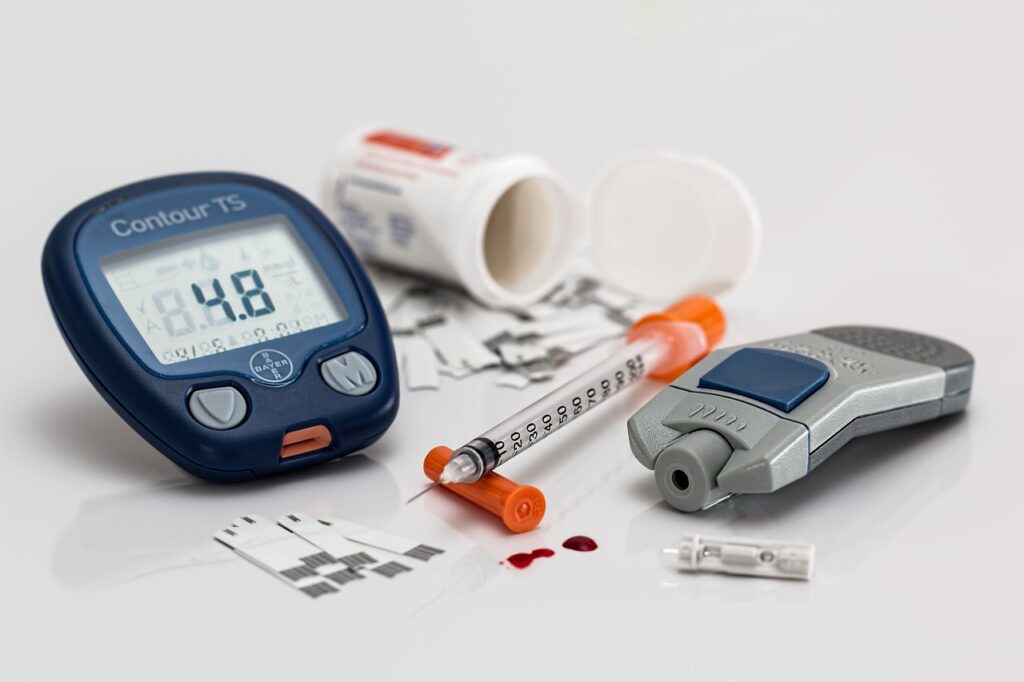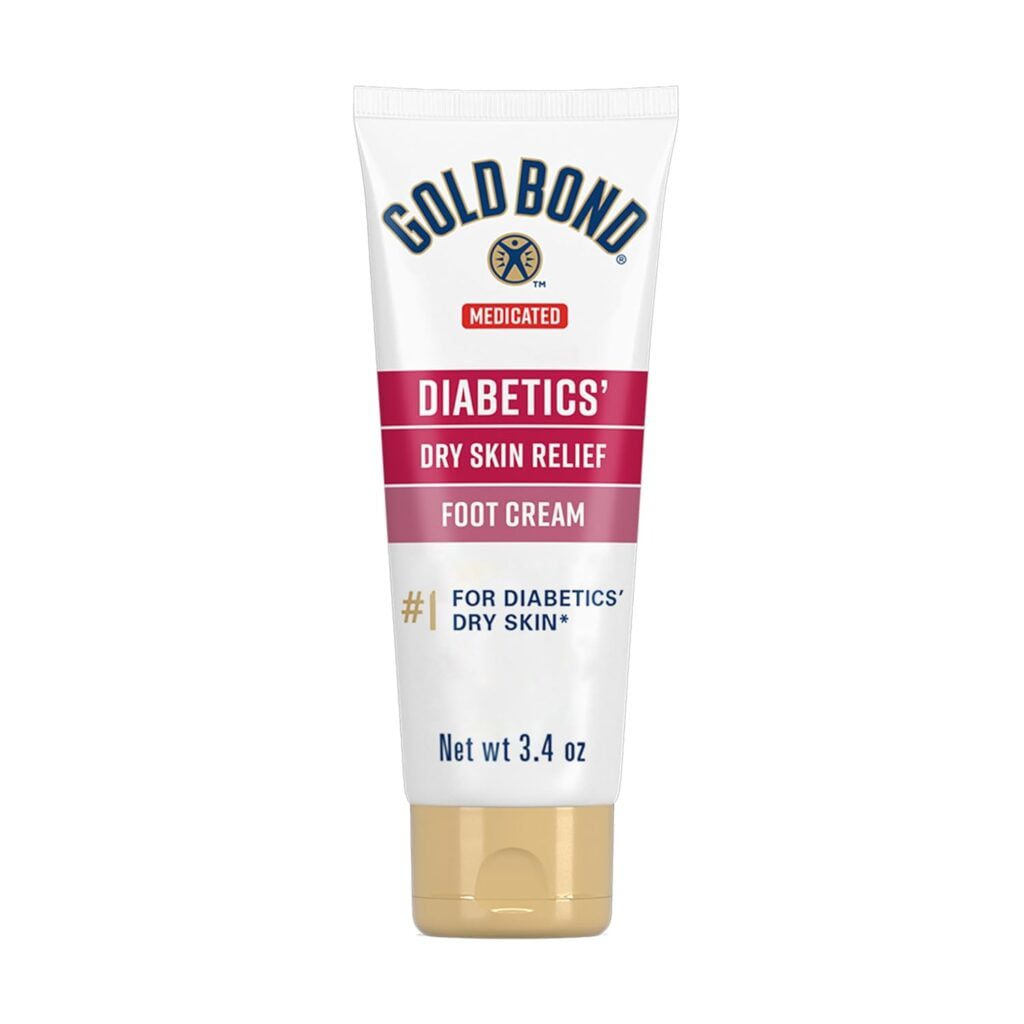Although having diabetes can be difficult, people can live happy, meaningful lives while efficiently managing their illness if they have a thorough awareness of the symptoms, kinds, and management techniques. We will go over all you need to know about it in this in-depth overview, including symptoms and available treatments.
I. Diabetes Symptoms
Identifying the symptoms of diabetes is important for early recognition and management. Common symptoms include:
- Frequent urination
- Increased thirst
- Unexplained weight loss
- Fatigue
- Blurred vision
- Slow-healing sores
- Tingling or numbness in hands and feet
If you experience any of these symptoms, it is necessary to consult a healthcare professional for proper diagnosis and treatment.
II. Diabetes Types
It is classified into many types, each with its own distinct characteristics and management strategies. The main types include:
A. Diabetes Type 1
Type 1 is a medical condition in which the immune system accidentally targets and kills insulin-producing cells in the pancreas. It is also referred to as insulin-dependent diabetes or juvenile diabetes. This causes a shortage of insulin, which raises blood sugar levels. Important facts regarding type 1 include:
- Typically diagnosed in children and young adults
- Requires lifelong insulin therapy
- Cannot be prevented
B. Diabetes Type 2
Type 2 is the most common form of diabetes, accounting for the majority of cases worldwide. In type 2, the body becomes resistant to insulin or doesn’t produce enough insulin to maintain normal blood sugar levels. Important facts about type 2 include:
- Linked to lifestyle factors such as obesity, physical inactivity, and poor diet
- Can often be managed with lifestyle modifications, including diet and exercise
- May require oral medications or insulin therapy in some cases
C. Diabetes Type 3
While type 1 and type 2 are well-known, there is ongoing research into other forms of the condition. Some scientists have proposed the existence of type 3, which refers to insulin resistance in the brain and its potential link to Alzheimer’s disease. However, more research is needed to fully understand this concept.
III. Diabetes Mellitus
Mellitus is a term used to describe both type 1 and type 2, categorized by high blood sugar levels over a prolonged period. It includes various metabolic diseases, each with its own underlying causes and management strategies.
IV. Diabetes Symptoms in Women
It can affect women differently than men, with some symptoms being more prominent in females. Common diabetes symptoms in women include:
- Yeast infections
- Polycystic ovary syndrome (PCOS)
- Urinary tract infections (UTIs)
- Sexual dysfunction
- Gestational during pregnancy
Women need to be aware of these symptoms and seek medical attention if they experience any concerning changes in their health.
V. Diabetes Diet
A healthy diet plays a key role in managing it and preventing complications. Here are some dietary guidelines for individuals:
- Emphasize whole, organic foods such as fruits, vegetables, lean proteins, and whole grains.
- Limit intake of refined carbohydrates, sugary beverages, and high-fat foods.
- Monitor portion sizes and practice mindful eating.
- Include sources of healthy fats, such as nuts, seeds, and avocado.
- Stay hydrated by drinking plenty of water throughout the day.
Following a well-balanced diet can help stabilize blood sugar levels and improve overall health outcomes for individuals.
VI. Diabetes Insipidus
Unrelated to blood sugar levels, diabetes insipidus is an uncommon illness marked by increased thirst and urine. It happens when the kidneys are unable to retain water, which causes them to excrete a lot of diluted urine.. There are two main types of insipidus:
VII. Diabetes Insipidus Symptoms
Symptoms of insipidus may include:
- Extreme thirst
- Excessive urination
- Dehydration
- Fatigue
- Weakness
- Irritability
Insipidus needs immediate medical attention since it can cause electrolyte imbalances and dehydration if left untreated.
VIII. Diabetes in Dogs
It also affects dogs, especially if they are elderly or have an inherited susceptibility to the disease.. Symptoms of diabetes in dogs may include increased thirst, frequent urination, weight loss, and lethargy. Treatment typically involves insulin therapy, dietary management, and regular veterinary care to manage the condition effectively.
IX. Diabetes Test
Typically, a combination of blood tests and other diagnostic techniques are used to diagnose. Common tests for it include:
- Fasting blood sugar test
- Oral glucose tolerance test
- Hemoglobin A1c test
- Random blood sugar test
Healthcare professionals can evaluate blood sugar levels and choose the best course of therapy for diabetic patients with the use of these tests..
X. Diabetes Treatment
The course of treatment varies according to the kind and severity of the illness. Some common treatment options include:
- Insulin therapy (for type 1)
- Oral medications (for type 2)
- Lifestyle modifications (diet, exercise, stress management)
- Continuous glucose monitoring
- Regular medical check-ups and monitoring of blood sugar levels
A thorough strategy adapted to each patient’s needs is necessary for the effective management of that disease, involving collaboration between healthcare professionals and patients.
XI. Diabetes ICD 10
The International Classification of Diseases (ICD) is a standardized system used for classifying and coding diagnoses and procedures. In the ICD-10 classification system, diabetes mellitus is coded under category E10-E14, with specific codes assigned based on the type and complications of the condition.
XII. Diabetes Medications
There are many medications available to help manage it and control blood sugar levels. These medications may include:
- Insulin injections or pumps
- Oral medications such as metformin, sulfonylureas, and DPP-4 inhibitors
- Injectable medications like GLP-1 receptor agonists
- SGLT2 inhibitors
Effective patients should collaborate closely with their medical professionals to choose the best medication schedule for them based on their unique needs and medical background.
Conclusion
Managing diabetes involves proactive measures and a dedication to healthy living choices. By understanding the symptoms, types, and treatment options of that disease, individuals can take control of their health and minimize the risk of complications. Remember to consult a healthcare professional for personalized advice and support on managing it effectively.
Patient Guidelines:
Sure, here’s a table outlining some precautions and dietary guidelines for effected patients:
| Precautions | Diet Guidelines |
|---|---|
| Regular exercise | – Emphasize on whole grains |
| Monitor blood sugar | – Include plenty of fruits and vegetables |
| Take medications as prescribed | – Limit intake of sugary foods and beverages |
| Regular medical check-ups | – Choose lean protein sources like poultry, fish, tofu |
| Manage stress levels | – Control portion sizes |
| Avoid smoking | – Limit intake of saturated and trans fats |
| Limit alcohol consumption | – Opt for low-fat dairy products |
| Wear medical ID | – Monitor carbohydrate intake |
| Take care of feet | – Stay hydrated, drink plenty of water |
| Stay updated on management | – Avoid processed and refined foods |
Remember, these are general guidelines. It is important for effected individuals to work closely with their healthcare provider or a dietitian to develop a personalized plan that meets their specific needs and health goals.
1- Are diabetes deadly?
These can be deadly if left unmanaged and untreated, as it increases the risk of heart disease, stroke, and other serious complications.
2- Can diabetes cause blindness?
Yes, it can cause blindness due to diabetic retinopathy, a complication that damages the blood vessels in the retina.
3- How diabetes effects the body?
It can affects the body by disrupting insulin production or utilization, leading to high blood sugar levels that can damage organs and tissues over time.
4- When diabetes is out of control?
It is considered out of control when blood sugar levels consistently remain too high or too low, leading to potential complications and health risks.
5- Why diabetes cause weight loss?
It can cause weight loss due to the inability of cells to properly utilize glucose for energy, leading to the body breaking down fat and muscle for fuel. Additionally, increased urination associated with diabetes can contribute to weight loss through fluid lo





2 thoughts on “7 symptoms of Diabetes Medications, Types and Patient guidelines”